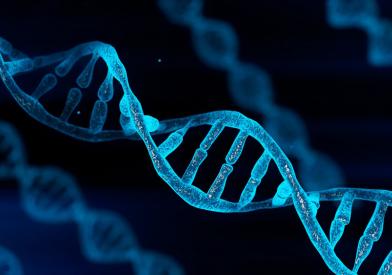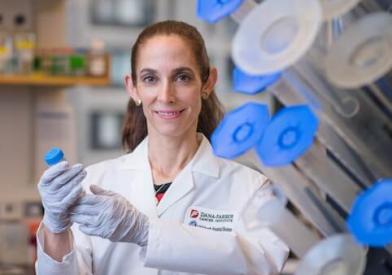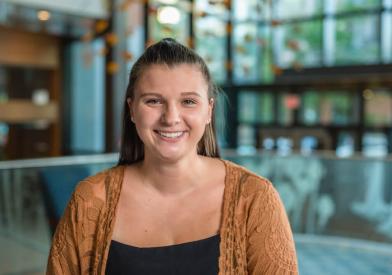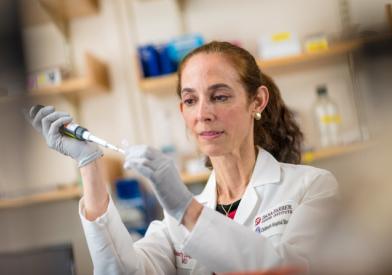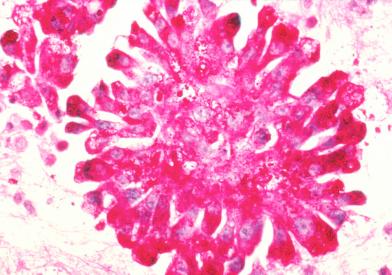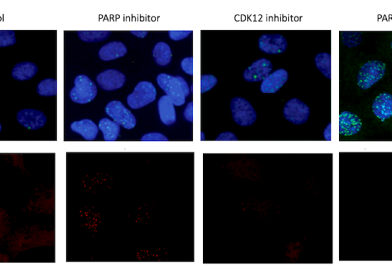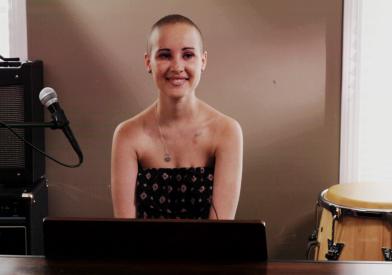What Is Ewing Sarcoma?
Ewing sarcoma is a kind of childhood cancer that grows in bones or soft tissues. It is typically found in the bones of the pelvis or thigh, though it can arise throughout the body. Ewing sarcoma:
- Tends to strike children and young adults between the ages of 5 and 20.
- Is more common in boys than in girls.
- Is diagnosed in about 250 children and adolescents each year in the United States, accounting for between 2 to 3 percent of all childhood cancers.
Most children with Ewing sarcoma have localized disease, meaning the cancer is only in the primary tumor. About a quarter of children with Ewing sarcoma have metastatic disease, where the cancer has spread to parts of the body outside of the primary tumor. When Ewing sarcoma spreads, it usually spreads to the lungs, other bones, or the bone marrow. Metastatic Ewing sarcoma is more challenging to treat.
At Dana-Farber/Boston Children's Cancer and Blood Disorders Center, the pediatric cancer doctors and orthopedic surgeons in our Bone and Soft Tissue Tumors Program have extensive experience treating children with Ewing sarcoma. Our goal is to help your child achieve the best outcome and remain active and healthy.
Causes and Symptoms of Childhood Ewing Sarcoma
Ewing sarcoma occurs because a specific type of stem cell starts to grow abnormally. These cells form a tumor.
We understand now that one particular chromosomal change (called a "translocation") in a cell's DNA – the "building blocks" that make up all living organisms – is one of the first events that turns a normal cell into an Ewing sarcoma cell. This translocation is not inherited. It develops in cells after the child is born. We do not know why some people are more likely to have cells that produce this translocation and develop Ewing sarcoma.
Ewing sarcoma symptoms can be non-specific and mimic other more common ailments. While symptoms vary from child to child, the most common include:
- Sporadic bone pain of varying intensity
- Localized pain around the site of the tumor
- Limp or limited range of motion in the affected area
- Swelling
- Redness around the site of the tumor
- Fever of unknown cause
- Decreased appetite
- Weight loss
- Fatigue
- Numbness, tingling, or weakness (symptoms related to nerve compression caused by the tumor)
- Loss of bowel and bladder function (if the tumor is in the spinal region)
Because many of these symptoms can also point to other conditions, it's essential to have your child evaluated by a qualified medical professional right away.
How We Diagnose Childhood Ewing Sarcoma
The first step in treating your child is an accurate and complete diagnosis. Doctors typically diagnose Ewing sarcoma using a combination of imaging and biopsy. Your child's physician may order several different tests, including advanced imaging studies, bone scan, bone marrow aspiration, and tumor biopsy.
There may be other diagnostic tests that your doctor will recommend depending on your child's needs. After completing all necessary tests, our experts meet to review and discuss the findings. Afterward, we meet with you and your family to discuss the results and outline the best possible treatment options.
How We Treat Childhood Ewing Sarcoma
We typically treat children with Ewing sarcoma with two approaches: local control and systemic therapy. Local control involves treating the tumor itself, usually through surgery, radiation, or both. Systemic therapy treats any tumor cells throughout the body, generally through chemotherapy. Ewing sarcoma can usually only be cured by using local control together with systemic therapy.
Your child's treatment may include (alone or in combination):
-
Chemotherapy: Ewing sarcoma treatment almost always begins with chemotherapy, aiming to destroy or shrink cancer cells and prevent them from spreading. Most children with Ewing sarcoma respond very well to chemotherapy.
Chemotherapy is usually given over a few days every two weeks for about 12 weeks before it is time for local control of the primary tumor. After surgery or radiation for local control, we continue chemotherapy for another 4-6 months to eliminate all the cancerous cells in the body. We give chemotherapy cycles every two weeks in Ewing sarcoma cases because studies show that this schedule (called "interval compression") improves children's outcomes with localized Ewing sarcoma.
The typical chemotherapy regimen for a child with newly diagnosed Ewing sarcoma involves medicines given intravenously (or "IV") as a direct injection into the bloodstream. Most children can receive this regimen as an outpatient.
While chemotherapy can be quite effective in treating certain cancers, the drugs cannot differentiate normal healthy cells from cancer cells. As a result, there can be adverse side effects during treatment. Being able to anticipate these side effects can help the care team, child, and family prepare (and, in some cases, prevent) these complications from occurring, if at all possible.
- Surgery: Local control of Ewing sarcoma is achieved with surgery or radiation therapy. We may perform surgery after the first 12 weeks of chemotherapy to remove any remaining tumor parts. Surgeons may consider several surgical intervention forms depending on the tumor's size and location.
- Limb-salvage surgery: This procedure helps preserve the limb by removing the tumor and wide margins of healthy tissue surrounding the tumor. The goal is to maintain limb function and the pre-surgical appearance of the limb. However, limb-salvage surgery can leave an arm or leg fragile and increase the risk of fracture. As a result, patients will need to avoid high-stress physical activities, such as skiing, skateboarding, and bike riding.
- Rotationplasty: This is a partial amputation that preserves a cancer-free lower leg, attaches it to the thighbone, and uses the ankle as a knee joint. It is especially useful in very young children where limb length can be an issue. One of the significant benefits of rotationplasty is that it allows the child to maintain a very active lifestyle, including high-impact sports.
- Amputation: An amputation may be necessary if the surgeon can't remove the tumor entirely (for example, if it involves the nerves and blood vessels) or preserve limb function through limb-salvage surgery. If amputation is necessary, we may fit your child for a prosthesis following surgery.
- Radiation therapy: Children with Ewing sarcoma occurring in a location where surgical removal would lead to unacceptable side effects will receive radiation therapy instead of surgery. Some children need both surgery and radiation therapy. We use radiation to shrink the tumor or to destroy it completely. Ewing sarcoma is very sensitive to radiation therapy.
- Proton beam radiation therapy: Depending on the tumor's location and size, our doctors may suggest proton beam radiation therapy. This treatment targets a more specific area than standard radiation and spares more of the surrounding healthy tissue and organs.
Complementary treatments may involve acupuncture, acupressure, therapeutic touch, massage, herbs, and special dietary recommendations.

